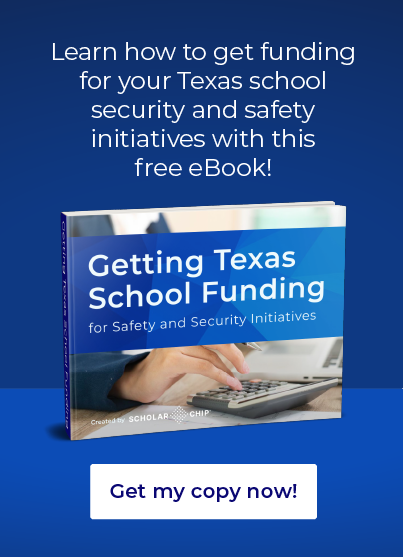More than two decades after the Columbine High School shooting, school safety continues to present challenges at American schools across the country. Texas schools are no exception. Each state has tackled the problem from its own angle, often based on budgetary constraints and the values held most deeply by its citizens. Texas is one of twenty states that allow schools to arm teachers (to varying degrees) on school property. Texas schools that wish to arm teachers on campus currently have two programs to choose from:
- The marshal plan lets school boards authorize school personnel to act as on-campus peace officers. Marshals must undergo eighty hours of training and store their firearm in a lockbox when on campus. Marshals cannot carry their weapons while near children.
- The guardian plan allows school boards to designate staff members to carry weapons on campus at all times. Fifteen to twenty hours of training and a concealed carry permit are required. There is no lockbox requirement for schools and educators operating on the guardian plan.
In 2019, Texas governor Bill Abbott signed multiple bills into law intended to improve Texas school safety. One of the measures enacted is to increase the number of marshals on Texas school campuses. The bill also put forth additional funding for more school counselors, more extensive mental health training for teachers, and campus-hardening measures such as metal detectors.
The Risks of Allowing Schools to Arm Teachers
While many Texas citizens have cheered the idea of armed teachers, the strategy has its drawbacks. Over the past two years, there have been dozens of incidents where firearms were accidentally discharged on school property. In other unfortunate scenarios, firearms were mishandled by their carriers on school campuses or students gained access to unattended guns at school. In short, the data indicates that putting more guns on school campuses makes them more dangerous, not safer.
In addition, there’s no evidence to suggest that arming teachers will do anything to prevent school shootings. Fortunately, there are proven alternative methods of preventing school violence.
The Role of Social and Emotional Learning in School Safety Plans
Social and emotional learning (SEL) teaches children the skills they need to manage their emotions, set goals, feel empathy, develop positive relationships, and make good decisions. Implementing an SEL program on a school campus will make campus culture more positive and help prevent violent incidents. A strong SEL program that reaches across subjects and is woven throughout the curriculum can help staff quickly identify at-risk students and provide immediate interventions. When it comes to preventing school violence, few tools are more effective than a comprehensive SEL program.
Two Proven Ways to Prevent an Attack on Campus
While it’s important to prepare for every possible scenario, there’s no doubt that every school leader would rather prevent a school attack than have to react to one. The good news is that there are two evidence-supported ways to prevent an attack on a school campus.
1. Identify at-risk students and intervene immediately.
A study of school shooters, conducted by the US Secret Service, found that before they committed a violent act on campus, most attackers:
-
- Had unaddressed mental health issues
- Experienced bullying at school
- Experienced social stressors in their peer group or with a romantic partner
- Experienced stressors at home, such as domestic violence
- Communicated their intent to harm others, but nobody said or did anything due to fear or disbelief
All attackers included in the study exhibited concerning behaviors that were noticed by school staff and/or peers; unfortunately, nobody spoke up. School leaders were unable to put the pieces together and intervene in time.
2. Control access to campus at all times.
The Police Foundation recommends restricting access points on campus in order to prevent outsiders from easily accessing school buildings. These measures may include perimeter fencing, window barriers, and doors that are always locked from the outside. Video monitoring can be used to ensure that nobody opens exterior doors to allow others into the building. All visitors should always be forced to enter campus through the front office entrance, where they can be properly screened and signed in. Distributing visitor passes to authorized guests can be a simple way to make intruders stand out to all students and staff.
Contact ScholarChip for More Information
Your school could possibly have a positive experience if it starts to arm teachers. But if the risks are just too high for your campus or district, ScholarChip offers a wide range of school safety products to secure campuses, improve school climate, and keep students and staff safe.
If you are more interested in preventing school attacks than reacting to them, ScholarChip wants to talk to you. We can walk your leadership or task force through a needs assessment and design a school security plan that will help prevent potential attacks at your campus. Contact ScholarChip today.
ScholarChip offers a solution called Alternative Behavior Educator (ABE). This innovative program enables school administrators and counselors to identify, monitor, and improve student behavior throughout a student’s career, while giving them powerful data-driven reports that quickly flag at-risk students, help monitor and chronicle progress, and help them identify school safety risks before incidents.
To learn how ScholarChip can help make Texas schools safer or get free recommendations, feel free to contact us for a free 1-on-1 consultation today!


